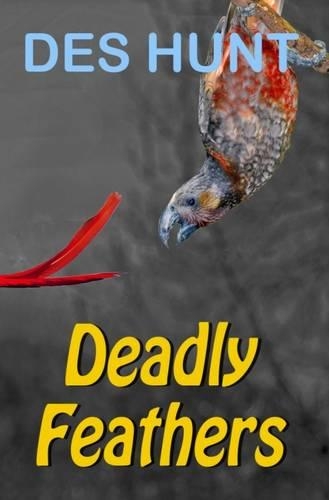
Deadly Feathers: 2016
(Paperback)
Publishing Details
Deadly Feathers: 2016
By (Author) Des Hunt
Torea Press
Torea Press
5th November 2019
New Zealand
Classifications
Children
Fiction
Physical Properties
Paperback
124
Width 130mm, Height 198mm, Spine 11mm
150g
Description
Noah Larsen lives in the big city, enjoying fast-foods, movies, and heaps of mates. That's until his parents decide to move to Stewart Island. Looking at a map, Noah sees the island as the most desolate place on earth, stuck way down south, almost at the bottom of the world. The reality, when he gets there, is even worse: no fast-food chains, no cinema complex, and not a single boy of his age at the tiny school. But there is a girl, who lives next door: Hailey North, a bossy know-it-all who has a passion for the outdoors and the island's special wildlife.Then Noah sees a spectacular parrot flying over the bush, a South American macaw, a bird that should never be in the New Zealand forest. Soon afterwards he starts seeing sick and dying native parrots, particularly kaka. He and Hailey put the two events together and come up with a theory, linking them to an American lone-sailor whose yacht is anchored in a nearby bay. But without physical evidence nobody believes them.Enter Sirocco, the celebrity icon for the world's rarest parrot - the flightless kakapo. He's returning to the island of his ancestors to promote environmental care over the coming tourist season. Everybody is thrilled about it, except for Noah and Hailey, who fear the special parrot will die, just like the kaka. What's more, almost all of the world's population of kakapo live on neighbouring Codfish Island, three kilometres off the coast - just a short flying trip for any bird, healthy or diseased.As increasingly more birds die, Hailey and Noah must battle against both time and weather to capture the macaw. All the while knowing that if they fail, they will have aided the extinction of one of the world's truly special creatures.
Author Bio
Des Hunt was a science and technology teacher for many years, interspersed with periods of curriculum development both in New Zealand and overseas. During this time he had several textbooks published to support the New Zealand curriculum. Over the last twenty years he has experimented with other ways of interesting youngsters in science, creating computer games and writing non-fiction and fiction with scientific themes.
